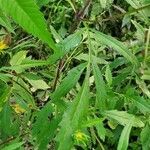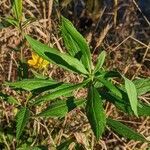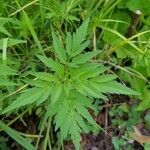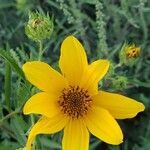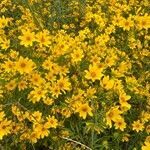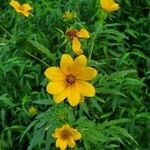Annual or biennial, 3-15 dm, glabrous or slightly hairy; lvs pinnately or bipinnately divided or compound, 5-15 cm including the 1-3 cm petiole, the segments lanceolate or lance-linear, acuminate, incised-serrate or pinnatifid; rays ca 8, 1-2.5 cm; disk 8-15 mm wide; outer invol bracts mostly ca 8(-10), linear, 5-12 mm, mostly shorter than the inner, straight, the back glabrous or finely short-hairy, the margins smooth or moderately ciliate; achenes flat, 5-7 mm, mostly 1.5-2(-2.5) times as long as wide, strigose, the margins antrorsely ciliate and commonly narrow and interruptedly thickish-winged; pappus of 2(-4) antrorsely or retrorsely barbed awns, or none. Wet places, most often in shade; Me. to Minn., s. to Va., Okla., and Tex., probably only intr. eastward. Aug.-Nov.
